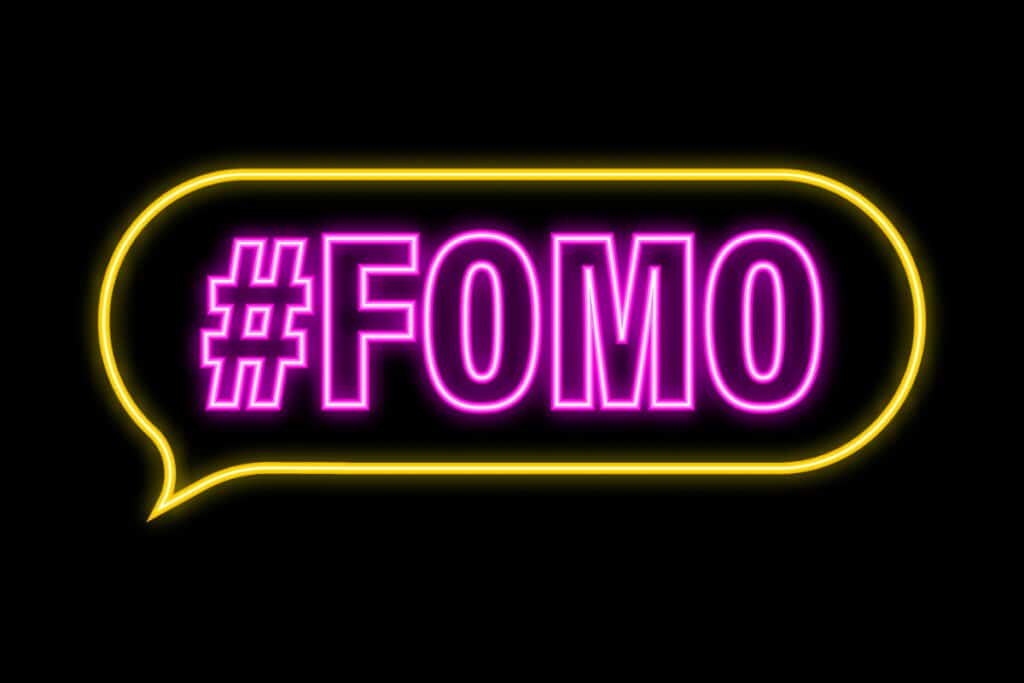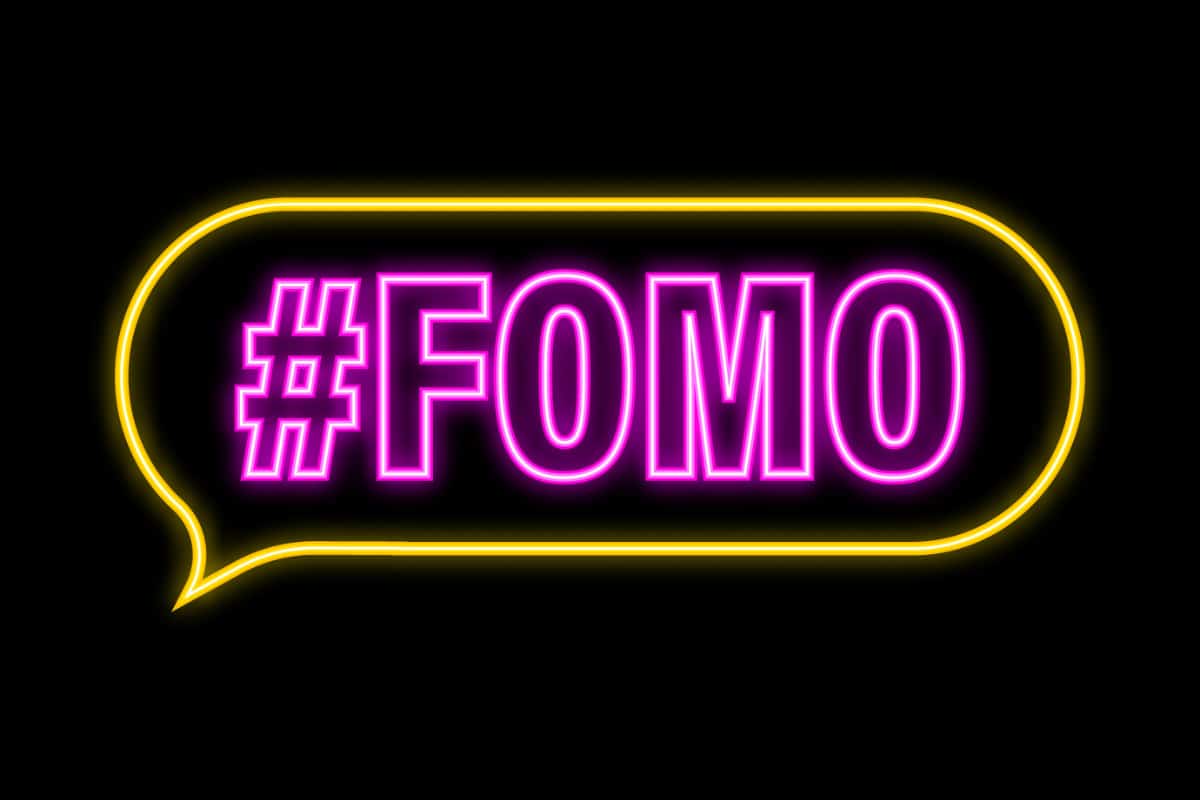You will have definitely heard the acronym FOMO, that much is certain. But what does FOMO mean? Here’s everything you need to know…
FOMO is a tool, as well as an acronym. Used by marketing companies for decades, the idea of FOMO is one of the most useful sales tactics used by companies big and small to sell more products.
When applied correctly, the application of FOMO to a marketing campaign can 10X its results – this is why it is often used by companies big and small, from trillion-dollar mega-corporations like Apple and Samsung to small, mom and pop stores on your local high street.
Whenever sales are involved, FOMO will not be far away. It is a tool that plays on deep woven psychological traits, traits that humans evolved to have over millions of years. It uses things like scarcity, persuasion, and fear to motivate potential buyers to pull the trigger and make a purchase.
What Does FOMO Mean?
FOMO means Fear of Missing Out; that’s literally it. Simple, right? You can take FOMO and apply it to anything – from a new product launch to a night out with friends. FOMO is applied by and used by all different kinds of entities. The point of FOMO is to get someone to do something based on the idea that, if they don’t, they’ll be worse off somehow.
- I bought this new iPhone because of FOMO.
- I went to the party because Tim gave me FOMO.
- I have a cold but my FOMO made me drive 100 miles to this gig.

How FOMO Works – An Example
For instance, say a new iPhone launches. Apple’s marketing campaign for that phone might say, “our best camera yet”. If you care about photography and like iPhones, this would appeal directly to you as a user. Your old iPhone, now no longer the best option for photography starts to feel old hat, not quite as good as before. This is how FOMO works on a psychological level. You start questioning things.
You want the best option for photography, not last year’s inferior model. The fear of missing out on these new features, AKA FOMO, is what motivates someone to switch their old phone for a newer model when their old model is still perfectly adequate. iPhones last for AGES, so you really shouldn’t let FOMO get the better of you. But plenty of people do. Plenty of people only run an iPhone for 12 months. This is FOMO in action.
Another, different example of FOMO being used as a marketing tool is during Black Friday. Through a combination of scarcity – in this case, the length of the sales event and salacious marketing campaigns – make millions of people part with billions of dollars of their money, like clockwork, every single year, because they FEEL like they’d be missing out if they didn’t buy something during Black Friday.
How it works is simple: Black Friday usually only lasts 24 hours, so you don’t have much time to act. During Black Friday loads of products have massive discounts applied to them – usually around 20% or 30%, sometimes even more. If you miss the boat, you miss the potential savings you could have made. Want a 4K TV? Get it during Black Friday. They’ll NEVER be cheaper than they are then.
But this is just FOMO doing its thing. You can get a great deal on a 4K TV at any point during the year. You could buy a new one and finance it, you could buy a refurbished model, or you could buy a slightly older model and save money. You didn’t really need Black Friday for anything. But FOMO made you think you did. Make sense? That’s how FOMO works.
Who Invented The Word FOMO?
Unlike most internet-based acronyms, we do have a pretty good idea about the genesis of FOMO. It first appeared inside a Harvard article by a chap called Patrick McGinnis. McGinnis’ essay was published in 2004. In the article, McGinnis used the word FOMO to refer to Fear of Missing Out and also another acronym, FOBO, which means Fear of Better Option.
McGinnis defines FOBO (fear of a better option) as part of commitment psychology. People suffering from FOBO may be reluctant to solidify plans because they worry a better opportunity may appear at the last second. And when there are ALWAYS newer options for pretty much everything, it is easy to see why FOBO is viewed as quite a big deal in both the social sciences and marketing.
FOMO actually stands for something, it is an acronym, whereas other slang terms – like XOXO – are harder to interpret.
The popularity and usage of FOMO, however, did not peak until the mid-2010s, so it is a fairly recent acronym – based on its wider usage by the general public. Theorists believe that FOMO became more prevalent as social media became more ingrained in peoples’ lives. The idea here is simple: social media makes people question not only their lives but the way they look and the things they own. And this, in turn, can cause FOMO – or anxiety and depression.
Who Is Most Likely To Experience FOMO?
Most people, at some point, will experience FOMO – it is a core part of the human condition. But there are certain people that are more sensitive to FOMO than others. Apps That Deliver lists the following types of people that are MOST likely to be susceptible to FOMO:
- People with household incomes above $75,000 a year were most likely to experience FOMO.
- 39% of people who suffered from FOMO felt envious, 30% felt jealous, and 21% felt sad or disappointed.
- FOMO is experienced by 69% of millennials.
- Travel (59%), parties and events (56%), and food (29%) are the biggest things that create FOMO among millennials.
- If offered a 30% discount, 66% of millennials would switch brands.
- If treated well through a customer-centric experience, 60% of millennials would stay loyal to brands they currently purchase from.
- FOMO is experienced by 56% of social media users.
- The most common contributors of FOMO include Facebook (72%), Instagram (14%), Twitter (11%), and Pinterest (8%).
- About 30% of millennials feel lonely always or very often.
- When compared to the general population, people who work irregular hours and do night shifts are 33% more likely to develop a mental illness.
That’s basically everything you need to know about FOMO, its uses, and how marketing people use it to sell you more stuff. My advice? The more aware of FOMO you are, the less of an effect it has on you. In the long run, avoiding and understanding FOMO when it happens will save you money, improve your health, and help you be happier.
FOMO sucks. But you can tame it.


